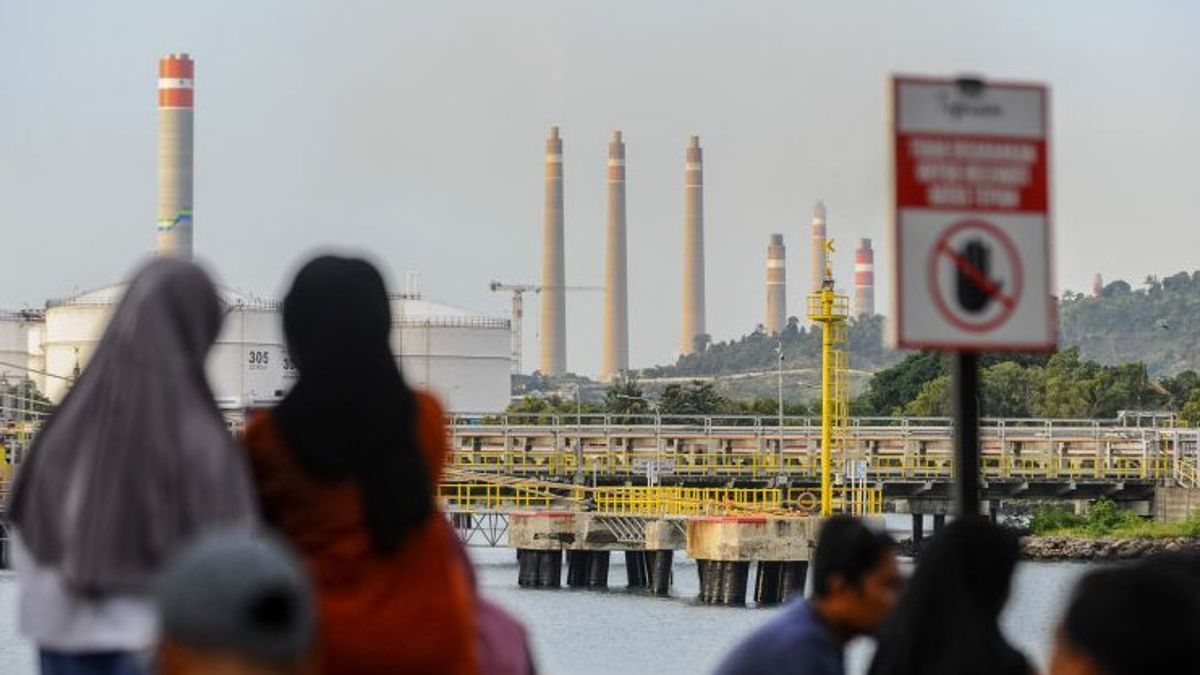JAKARTA - Senior Analyst Institute for Essential Services Reform (IESR) Farid Wijaya said the Java 9-10 PLTU in the Suralaya area, Banten, which uses green hydrogen and ammonia in its production process, could be imitated by other power plants.
"Of course, if it is successful in certain PLTUs and taking into account appropriate technical aspects, hydrogen and ammonia adoption can be carried out in other PLTUs," he said in a written statement, quoted from Antara, Saturday, July 27.
On the other hand, Farid still emphasized the importance of preparing a safe, reliable, and operationally cheap hydrogen storage medium.
The Java 9-10 PLTU is the first power plant in Indonesia to use green ammonia and hydrogen, accompanying coal.
The move is in line with a roadmap for the energy transition to achieve net zero emissions (NZE) in 2060, which focuses on developing environmentally friendly new and renewable energy.
Farid also said that hydrogen and ammonia have an important role and are projected to replace the important role of fossil fuels as energy commodities and industrial raw material chemical commodities.
The role of hydrogen, he continued, is very large. Recently, many countries are competing to place their position as hub technology, producers and consumers," he said.
"The hydrogen that is projected for the future is the low hydrogen footprint of carbon emissions, especially green hydrogen which comes from water electrolysis and renewable energy electricity," he said.
However, regarding whether it is profitable or not, Farid said further study was needed.
"However, during the process carried out with a good and correct approach, the state's profits can be maximized by helping minimize potential losses that may occur," he said.
Responding to this, the Secretary-General of the Ministry of Energy and Mineral Resources Dadan Kusdiana said that during the current initiation period, green hydrogen and ammonia were being tested for a mixture of fuel or co-firing of PLTU.
"Initial results from the trial show that ammonia co-firing can significantly reduce CO2 emissions without compromising the operational efficiency of the plant," he said.
SEE ALSO:
However, the results vary depending on the proportion of the ammonia used and the technical characteristics of the PLTU.
According to him, the technical challenges faced include handling the NOx (nitrogen oxide) emission corrosion and control that can increase due to ammonia burning.
In addition, research and studies are being carried out regarding the influence of the amount of ammonia mixture on the cost of power generation.
"In the future, if the economy has been achieved, then according to the NZE and RUKN roadmaps, hydrogen and ammonia can be applied to other PLTUs," he said.
The English, Chinese, Japanese, Arabic, and French versions are automatically generated by the AI. So there may still be inaccuracies in translating, please always see Indonesian as our main language. (system supported by DigitalSiber.id)













